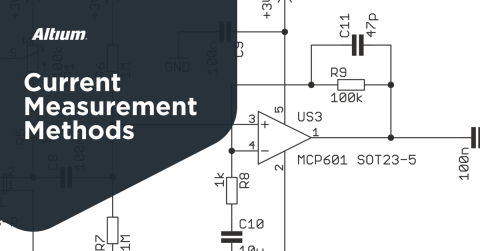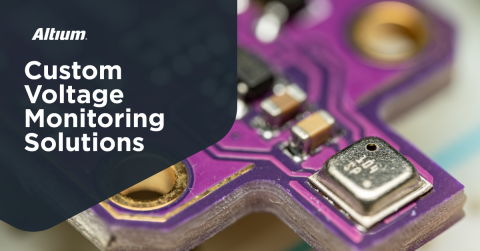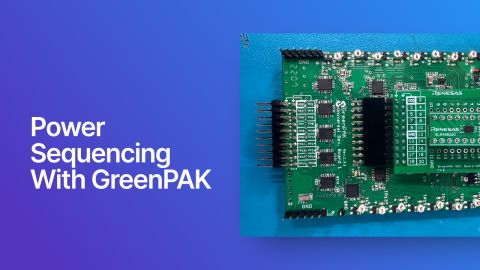Make Your Analog Front End Programmable With GreenPAK

When it comes to programmable analog electronics, there aren't a lot of compact options. Analog programmable electronics have always required some sort of digital host running firmware and accepting user commands. The circuitry that makes up the analog portion of the system is almost always built from discrete components, making compact form factors very difficult. For analog ASICs, reprogrammability typically comes through externally connected passives, so the circuit is only reprogrammable to the extent that signal paths can be changed, e.g., with switches or multiplexers.
If real reprogrammability is needed beyond swapping passive components, designers need a fully programmable front end. A GreenPAK provides this functionality with the additional capability of digital logic processing, forming a true programmable mixed-signal processor. If you want to see how GreenPAK simplifies your analog front end without using precision discrete components, keep reading this article.
How Most Analog Front Ends Are Made Programmable
An analog front end is most commonly made programmable by running code on a microcontroller. The microcontroller then toggles elements such as signal paths, voltage levels on key components, or digitally controllable components like DACs. The firmware running on the microcontroller may execute these changes based on logical conditions or user input, and this will toggle signal levels or signal paths to different components in the analog front-end design.
We have seen several types of components used to create reprogrammable analog front ends:
- Multiplexers and switches
- Arrays of circuits with passive SMDs
- Arrays of precision voltage references
- DACs for generating arbitrary voltages and waveforms
- ADCs for sensing voltages
- Transistor arrays used as switches, amplifiers, or other equivalent active circuits
For example, take a look at the block diagram below. The circuitry in this block diagram uses a microcontroller to toggle switches and multiplexers which route inputs and outputs to different parts of the analog front end. The MCU uses built-in analog inputs to sense the voltages in the circuit. There is also a multiplexer for swapping between precision references and a voltage rail, which sets the precision and detection threshold on a comparator and ADC.
Swapping between these different circuit elements should be a simple task, but it requires a complex architecture of digital and analog components. For example, we might want to adjust the thresholds on the analog comparator and the quantization of the ADC based on its reference voltage. Functionality can get more complex when an analog ASIC is added to the mix, something which is common in sensor arrays.
Measurement and Feedback in an Analog Front End
You can also implement feedback in an analog front end by measuring the output signals and adjusting the configuration on some of the components. This is one area where an ADC, DAC, and/or microcontroller would be implemented to execute the required control logic and configuration of the analog front end.
For example, if we have an analog front end that outputs a signal from a window comparator, we might want to monitor part of the signal chain and adjust the comparator, supply voltage, or hysteresis window. This can be performed in the block diagram shown below.
All of the logical conditions required to make the adjustments and toggling of external supplies or references, such as which switches, would be performed in the microcontroller. Even something as simple as toggling the threshold on a comparator circuit becomes very complex with standard off-the-shelf components. The bill of materials is quite large due to the number of ASICs required for this circuit.
GreenPAK Offers a More Compact Solution
The GreenPAK suite of components and configuration options help make mixed-signal systems simpler and more compact. Rather than implementing discrete sets of components for digital configurability, GreenPAK consolidates many of these components into a single programmable ASIC. This includes the ability to implement reconfigurability of the analog circuitry based on logical conditions and external inputs. Various processing blocks are then connected together internally in a reconfigurable matrix, similar to a CPLD or FPGA.
For example, the block diagram below shows how a reconfigurable analog front end can be constructed using only a GreenPAK mixed-signal processor and an external microcontroller. The external microcontroller runs the embedded application which will reconfigure the analog circuitry. The GreenPAK component implements all of the remaining analog sensing, conditioning, and processing, including:
- Analog signal detection with a comparator
- Establishment of reference voltages and hysteresis windows
- Sensing time-varying signals with an ADC
- Receiving configuration signals from the system host
- Outputting indicator signals or logic outputs
- Post-processing, such as implementing output delays, logic operations, or counters
- Interfacing with the system host over a serial interface
GreenPAK components allow the reference voltages, ADC sampling parameters, and logic operations to be customized using the Go Configure software. In this programming platform, users can take a graphical approach to designing and configuring their GreenPAK components. During operation, the system microcontroller or host processor can adjust multiple parameters in the GreenPAK analog front end over a serial interface. This is a level of reprogrammability that would normally take dozens of components to implement with traditional analog ASICs.
The mixed-signal processor components and developer tools in Renesas GreenPAK give designers the ability to develop fully custom digital, analog, or mixed signal system reset ICs. These programmable mixed-signal processors allow consolidation of functions found in system reset circuitry, allowing for smaller, more efficient systems. To learn more, take a look at the GreenPAK components and reference examples.
Whether you need to build reliable power electronics or advanced digital systems, use the complete set of PCB design features and world-class CAD tools offered by Altium to implement your GreenPAK solutions. Altium provides the world’s premier electronic product development platform, complete with the industry’s best PCB design tools and cross-disciplinary collaboration features for advanced design teams. Contact an expert at Altium today!











 Back
Back